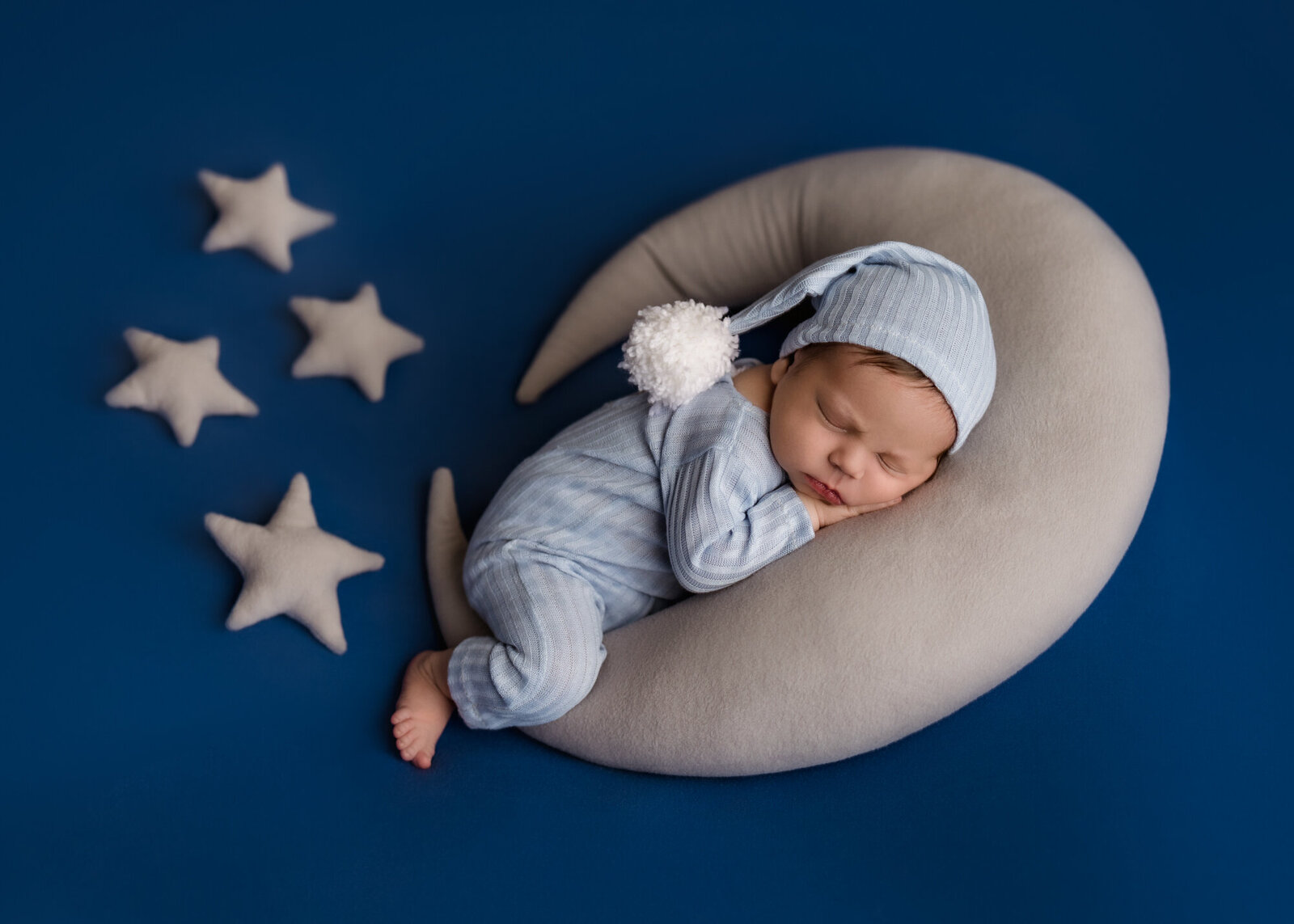
Designing Sleep-Inducing Spaces for Babies and Toddlers
I’m so excited to share today’s post with all of you. Rachel Canterbury from Sleepy Smiles Co. is a certified pediatric sleep consultant who I met last year. We quickly discovered just how much our passions overlap. I love what she’s doing — helping babies (and parents!) sleep better — and I’m delighted to feature her best baby sleep tips so all my clients can benefit from her wisdom.

by Rachel Canterbury
There’s a reason sleep deprivation is a common parental talking point. The quest for the holy grail of a full night’s sleep can often feel like a never-ending journey. However, by designing sleep-inducing spaces for your babies and toddlers, you might just get a step closer to those coveted sleepy ZZZs. In this post, I will walk you through the essentials of creating a peaceful sanctuary that will help lull your little ones into a restful slumber.
Understanding The Importance of a Restful Sleep Environment
Creating the perfect sleep environment for your little one goes beyond a comfy bed and cute decor from Etsy or Posh Baby in downtown Portland, Oregon. It’s about fostering a setting that signals to your child’s senses that it’s time to sleep. Not that I don’t love quality baby gear! I love Crate and Barrel Baby from afar as much as the next woman. However, name-brand baby gear doesn’t always guarantee a super restful sleep space for your baby or young child.
This article’s purpose is to help you develop a sleep sanctuary where everything from the lighting to the temperature, and even to the noise level is tailored to induce relaxation and sleep… without breaking the bank. This cozy haven does more than just provide a place for them to snooze; it can significantly enhance the quality and duration of their sleep, helping your tiny tot get the rest they need to grow and thrive.
Noise Control is Key
Masking the cacophony of daily life is crucial in crafting a sleep-friendly environment for your little one; Especially if you have multiple children. A white noise machine (my favorite is the Yogasleep), could be your answer to muffle those unwanted household sounds.
As a certified pediatric sleep consultant, I recommend avoiding lullabies or nature melodies machines, especially ones that emit excessive light or run on a track and emit excessive light (that split-second sound interruption can occasionally wake lighter-sleeping babies). Furthermore, lullabies are just a bit too stimulating for developing brains.
Remember to keep the white noise volume low, just enough to shield against potential disruptions. An ideal volume range for white noise is between 50–65 decibels. Any higher and it increases the potential for damage to your child’s sensitive ears.
One common question I receive from parents is when to stop using white noise. I consider white noise a positive sleep association. There is no potential harm in using it throughout childhood and beyond if it continues to be helpful. I use one myself! Remember to keep it at least 3 1/2 feet away from little noggins, and make sure cords are safely secured.
Consider Room Temperature and Lighting
Did you know room temperature and lighting significantly influence your little one’s sleep quality? Many pediatricians suggest that a temperature between 68-72 degrees Fahrenheit promotes better rest. Cooler temperatures are okay, but you should opt for a warmer sleep sack or blanket depending on age.
As for lighting, the rule of thumb is: the darker, the better. Investing in blackout curtains can help keep intrusive light out on long summer days in the Pacific NW. And for those late-night diaper changes or feedings, a dim red-toned nightlight should suffice, without disturbing your child’s circadian rhythm. Remember, it’s all about creating a cozy sleep space that subtly cues, “Sweet dreams, little one.”
The Right Bed for Comfortable Sleep
Navigating the world of cribs and toddler beds can be daunting. Remember, your goal is to find a firm mattress that will support your baby’s developing body while also prioritizing safety. Cribs should be height adjusted regularly as the baby’s ability to move develops. Crib slats should be no wider than 6 cm apart.
Babies should sleep without blankets, pillows, and stuffed animals for at least the first 12 months of life. Opt for a cozy cotton or fleece sleep sack instead. It will keep them warm and reduce their risk of SIDS. If they begin to take off the sleep sack as they get a bit older, here’s a nice sleep tip: putting one on backward can be a good way to keep them from unzipping after light out. After age 3, most children become adept at manipulating blankets, and you can transition out of using a sleep sack.
Don’t underestimate the power of a cherished stuffed animal or blanket for toddlers and preschoolers. These comforting items can make bedtime a less daunting prospect and help lull your child closer to a peaceful night’s sleep. Preschoolers especially can be prone to bringing their entire stuffed animal collection to bed with them at night, having things arranged just so. In my experience, keeping tabs on all their stuffies can contribute to their anxiety and reduce their ability to control their sleep space. If this is the case in your little one’s room, talk during the day about how they get to choose their absolute favorite stuffie or two and put the rest “to sleep” in a basket or chest from now on.
Embrace a Consistent Bedtime Routine
Rituals are anchors in the swirling sea of childhood. Establishing a consistent bedtime routine provides cues for your little one that it’s time to transition from play to sleep. Whether it’s a warm bath, a soothing story, a comforting lullaby sung by you both, or a special rhyme you say as you zip up a sleep sack, these rituals create a sense of security and familiarity that can help ease your child into a peaceful slumber.
These rituals are equally important as the physical sleep environment we have previously discussed. The predictability of a bedtime routine can be a balm to a weary toddler after a day of discoveries. Remember, the goal here is to make the transition to dreamland a mostly seamless and comforting journey.
Babies do best with a bedtime routine 10–20 minutes long (not including bath time), and toddlers and older children may do better with a similar or slightly longer one. If nursing or bottles are a part of winding down for the evening, do them early on, in a well-lit space to reduce their likelihood of dozing off. If they do get drowsy, brushing their teeth may help reduce the likelihood of accidentally reinforcing a feed-to-sleep association.
If you’re experiencing stalling or your little one is having “bedtime blues”, contacting a certified pediatric sleep consultant from Sleepy Smiles Co. is a fantastic way to develop a more positive bedtime routine.
Maintain a Screen-Free Zone
Screens and toys that make noise should be unwelcome guests at bedtime. The pesky blue light they emit can meddle with your little one’s sleep cycle, turning a peaceful slumber into a restless toss-and-turn night. To keep this from happening, consider making the nursery a tech-free zone. Keep televisions, smartphones, and tablets at bay, ideally turning them off 30–60 minutes before your tot hits the hay. This small change can make a big difference in setting the stage for a sleep-inducing atmosphere. It can also increase the bonding time by giving your child your full attention.
Patience is Part of the Process
In crafting the ultimate sleep-inducing haven, patience needs to be your trusted companion. It’s important to keep in mind that the transformation in your little one’s sleep patterns won’t happen overnight. Each child has their personality and quirks, and adapting to their new sleep sanctuary and reaping the benefits may take some time.
Be patient and persistent with your efforts, knowing that each tiny step is inching you closer to the end goal — a peaceful, uninterrupted night’s sleep. Remember, Rome wasn’t built in a day and neither is the perfect sleep environment for your child.